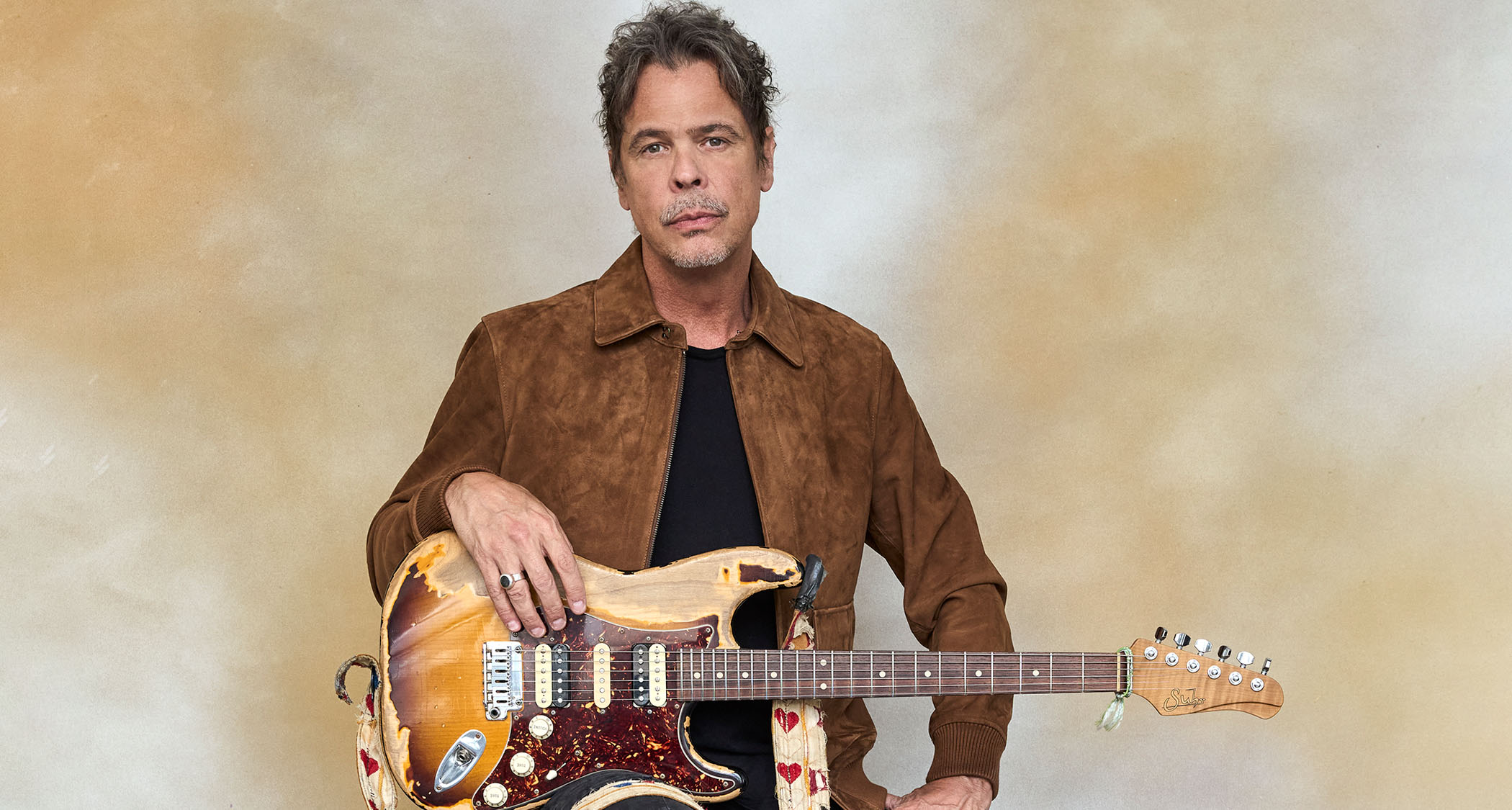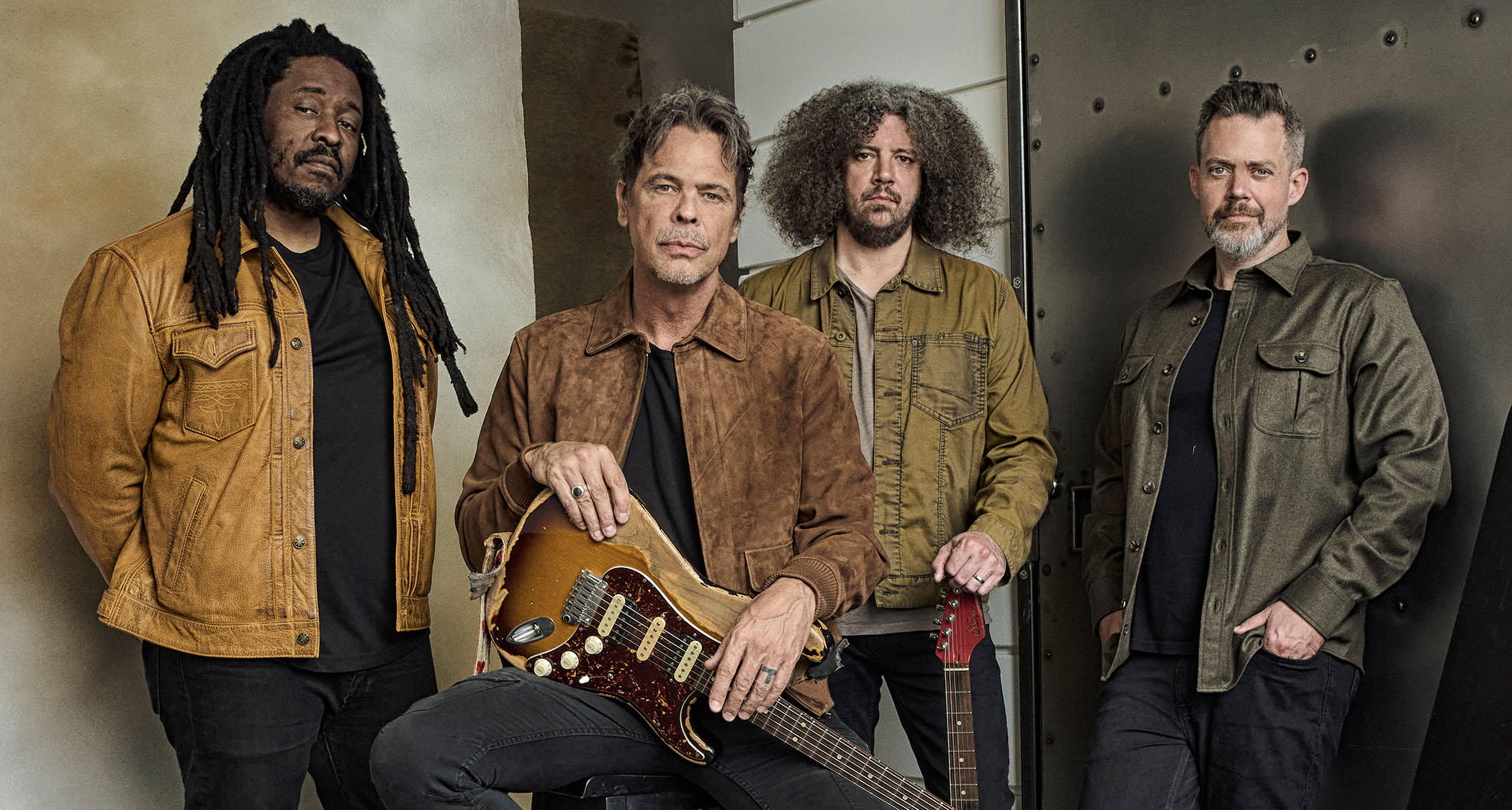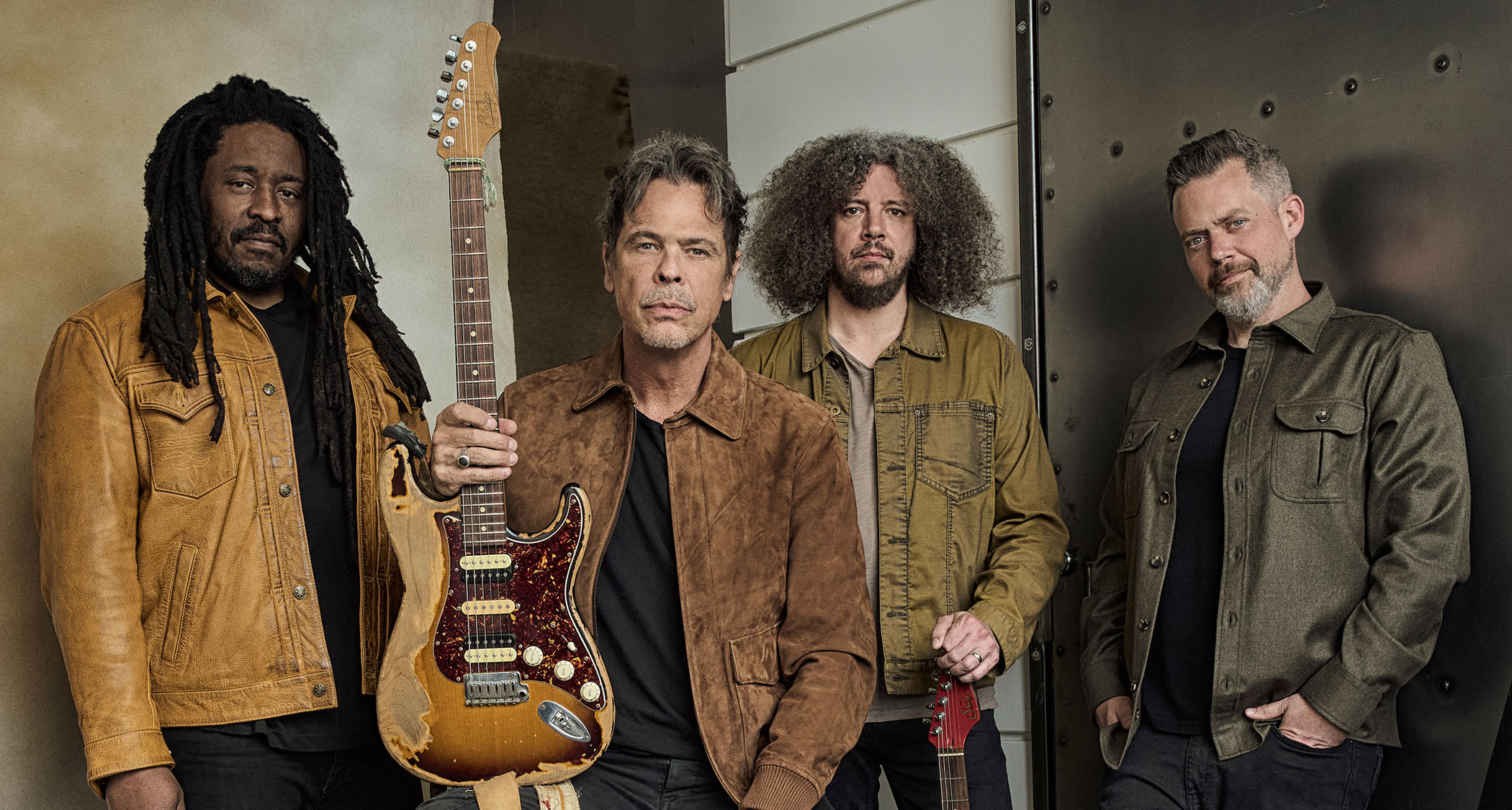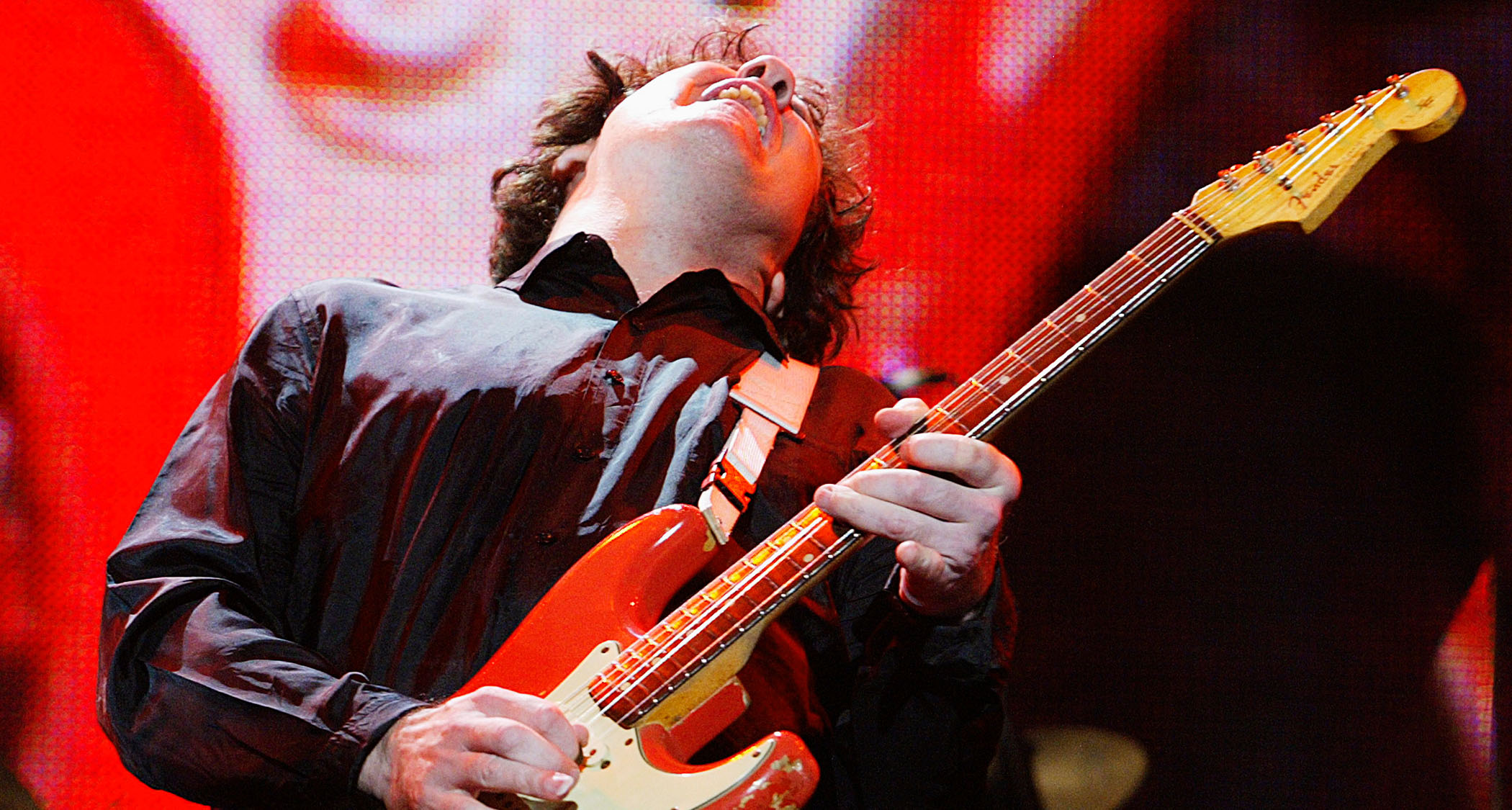“I’ll just grab ahold of the G string, pinch it and then bend it way up. You’re doing it to get a laugh out of the guys”: Big Wreck’s Ian Thornley on channeling Eric Johnson and Steve Morse – and why he’s called a guitar the “Jungle Gym”
Cutting lose on his Suhr electrics, Ian Thornley is officially enjoying himself on the Canadian rockers latest LP, The Rest of the Story. He discusses his intro to metal, pinch harmonics, and wrestling with producers

Since founding Big Wreck in the early ’90s, Ian Thornley has filled his band’s songbook with arena-conquering melodies, Zep-hailing heft and some of the most super-heroically knuckle-busting leads in contemporary hard rock.
In other words, he’s a master auteur, and this only continues with the Toronto-based outfit’s latest album, The Rest of the Story. But behind every great writer is a great editor, which is how the new record’s subtly strummed “Laws of Man” escaped its Seagram’s Seabreeze-schmaltzy origins.
Though the song is an acoustic outlier on Big Wreck’s eighth album, Thornley had initially sailed his way toward a mellow yacht-rock feel that “washed over you” with good vibes. Album producer Nick Raskulinecz (Deftones, Foo Fighters) just thought it was washed.
“I came up with a really beautiful guitar hook, and there were these little Jeff Beck-wannabe, bar-inspired licks that would float around the vocals,” Thornley says. “I was like, ‘This is going to be great when the boys get a handle on this,’ but then Nick heard it and he was like, ‘I fucking hate it.’
“He was not into the tune. He said it sounded New Age, like, ‘Welcome to Denver Airport.’ He wasn’t ripping me to shreds – it was all for a good laugh – but he made his point, and I think he was right.”
In turn, the next draft of the arrangement went minimal: the bass and drums got scrapped. It remains lush through full-bodied, open-D-tuned Dobro strumming, a few Nashville-tuned guitar layers in the final chorus, and Thornley’s emotive vocal.
Despite Laws of Man being a serene chapter within The Rest of the Story, Thornley and his bandmates – guitarist Chris Caddell, bassist Dave McMillan and drummer Sekou Lumumba – nevertheless pump up the release with jaguar-print metal, low-tuned hookiness, Edge-adjacent delay-scaping, and one particularly jazz-shredded juggernaut of a solo on Short Bangs.
All the latest guitar news, interviews, lessons, reviews, deals and more, direct to your inbox!
As Big Wreck turn another page in their prolific career, Thornley discusses songcraft, his Suhr-sponsored gear haul and the rest of the details behind his band’s latest Story.
The album’s Holy Roller plays out with this squealy, speedy, Sunset Strip kind of feel. First off, how hard are you pinching that Suhr?
98 percent of the guitars I play don't have a locking trem on them. You can't do any of the real acrobatics, but often I'll just grab ahold of the G string, pinch it and then bend it way up.
You’re doing it to get a laugh out of the guys, you know? That guitar is basically a signature Classic S model Suhr, but the body is basswood. Because I wanted a Floyd Rose guitar I can go up and down with, we affectionately call it the “Jungle Gym.” It's so goofy and fun. Once you do a couple of squeals and pinch harmonics, you just can’t stop. [Laughs]

Were you an ’80s metal fan growing up?
If I’m being honest, not even a little bit. That was more Brian [Doherty, Big Wreck’s late co-founding guitarist]’s thing. The heaviest thing I heard growing up was the Beatles’ Helter Skelter. My parents were not into that; they were hippies, but we did have Led Zeppelin III.
That was my first personal exposure to heavy, riff-driven stuff. I fell in love with the second side, with That's the Way and Tangerine, but then I remember flipping it over and it’s Immigrant Song. Like, “OK, what's this?” So I didn’t really know that era of metal. The Van Halen song that I really liked was Dance the Night Away, you know what I mean?
When it comes to those harmonized tap-peggios in the bridge, are you doing all that or are you locking in with Chris?
No, that's me. There's the main pass of it, and then I was like, “Maybe I'll do it an octave lower.” And then I was like, “Why stop there? Let's put a harmony on it!” I'll be honest with you, I'm not really a fan of the harmony, but it's in there. It just makes the whole thing goofier. And admittedly, I’m really not a tapper. That’s something that’s eluded me, the tapping and sweeping. I can get by with a pattern or two…
You might be underselling yourself, Ian.
No, really! I’m just doing 16th note triplets, and once you get the pattern down, it’s not hard. There’s no Guthrie Govan-style tapping in there, or any of those guys that next-leveled the whole game. That requires seeing the fretboard in a different way.
Since you mentioned them, there's a chunky, start-stop, early Van Halen swing to the groove of Believer.
With Eddie Van Halen, you can learn the licks, and you can learn the songs as he was doing it, but it's still going to be missing a certain bounce or swing
Yeah, I could see that. I mean, a lot of that stuff has seeped in over the past 15 to 20 years. I’ve gone back and listened to all the greats. With Eddie Van Halen, you can learn the licks, and you can learn the songs as he was doing it, but it's still going to be missing a certain bounce or swing. It’s just an innate feel; it sounds like he's smiling. [Laughs] It sounds like he's having the best time.
But there was a certain point in Big Wreck’s career where I was like, “I want to start playing guitar solos again.” Before [2012’s] Albatross, I hadn't really done much in the way of solos – at least stuff that's a little more showoff-y.
It might have been out of sheer boredom, but I was like, “I'm gonna start really drilling down on some of these guys’ styles,” so I went to my favorite guitar players – Steve Morse, Eric Johnson and guys like that. Eventually, those things show up in your feed, as it were.

One of the standout solos on this record is on Short Bangs, which has a lot of movements in it. It starts off jazzy, then it works into some skronky note choices, then it fully shreds through the back end. It's a journey, man.
Thank you! I really like that solo. Every once in a while, you can surprise yourself. There are some hustle-y bits in there – again, I’m going to cite either Steve Morse or Eric Johnson… or it could have been something I ripped from anyone from Scott Henderson to John Scofield. I think the trick is to keep lifting and trying stuff until it happens naturally in your own playing.
When we spoke with you around your 7 album, you mentioned that Suhr’s Ombre Amp was a major revelation through those sessions. Were there any new gear finds that impacted The Rest of the Story?
The solo on Short Bangs was done with a Suhr Hedgehog. I just love the sound of that thing. I usually use it for solos or for something really thick and mid-rangey. If you overload it, it gets kind of chewy, and I like that. I had a couple of setups. There was a Custom Audio amp – like, what Suhr was before they put the Suhr name on them.

A few years ago, we blew an amp on the road, and when we were swinging through L.A. the Suhr guys were nice enough to drop off this OD-100 SE+. It's a different thing than the PT100 that I use for that Marshall-y sound, and I really fell in love with pairing those two together – putting the PT100 on a set of greenbacks, and putting the OD-100 on the V30s. I used that for a lot of the heavier stuff on the record.
There was also a 5150 III hanging around that we would use to reinforce some low stuff, and I'm still obsessed with using small amps – there was an Hombre, there was a Bella, there were a couple of Fender Pro Juniors. And I use Brian's Matchless a lot – an early '90s DC30 that I've used on every record since Albatross. It was his favorite amp, and for good reason. It's a gorgeous-sounding amp.
How about guitars?
For guitars, my Lumberjack [Thornley’s signature Suhr Classic T] saw the most playing time. Nick was obsessed with it. He was like, “That is the best-sounding guitar you’ve got, man.” But I was like, “I’ve got a lot of guitars here… they all sound great!”
Looking back on the history of Big Wreck, does it surprise you to continue to have a story to tell?
Anytime we get to go in the studio, it's a real privilege. We get to go in and create. We don't have somebody hovering over our shoulders saying, “Nope, can't do that”
Yeah, 100 percent. That is never lost on me, dude. Anytime we get to go in the studio, it's a real privilege. We get to go in and create. We don't have somebody hovering over our shoulders saying, “Nope, can't do that.”
Have you ever faced writer’s block and been unable to tell that story?
I’m touching wood right now, but I've never really had writer's block, per se. I've had stuff that I’m not satisfied with, but I just roll up my sleeves and rewrite the fuckin’ thing. Every record has at least one song that's been rewritten several times. With Believer, there was some moving around, lyrically.
That probably gave me the most hassle. My version of writer's block is when I don't dig it right away, because the tiniest little drop of doubt can spoil the entire soup, you know? I'll go back to the drawing board, wash my brain clean and say, “OK, what else could this music be saying to me?”
- The Rest of the Story is out now via Thorn in My Side
- This article first appeared in Guitar World. Subscribe and save.
Gregory Adams is a Vancouver-based arts reporter. From metal legends to emerging pop icons to the best of the basement circuit, he’s interviewed musicians across countless genres for nearly two decades, most recently with Guitar World, Bass Player, Revolver, and more – as well as through his independent newsletter, Gut Feeling. This all still blows his mind. He’s a guitar player, generally bouncing hardcore riffs off his ’52 Tele reissue and a dinged-up SG.
You must confirm your public display name before commenting
Please logout and then login again, you will then be prompted to enter your display name.




